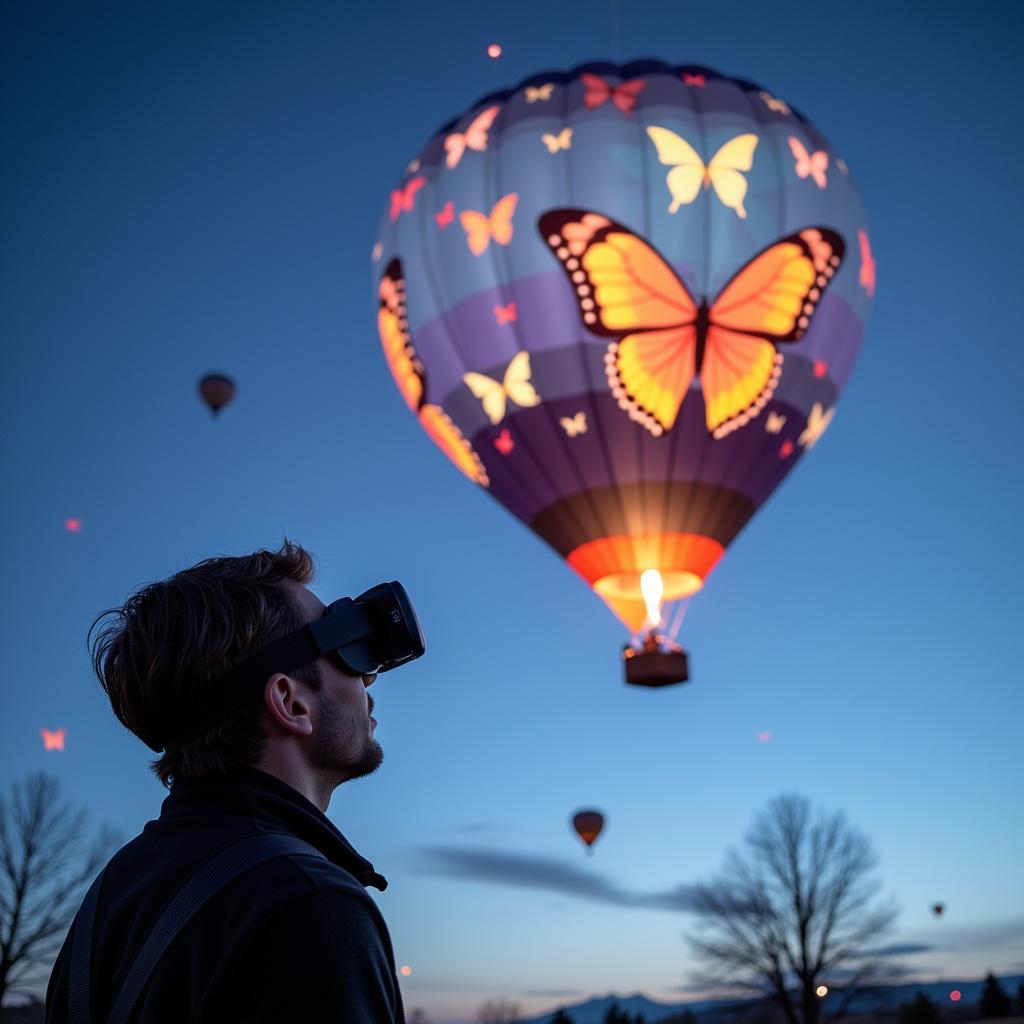Exploring the World of Airborne Art
Airborne Art, a captivating fusion of aviation and artistic expression, has a rich history and continues to evolve in exciting ways. From the iconic nose art of WWII bombers to contemporary digital creations projected onto drones, airborne art takes flight in diverse forms, capturing the imagination and inspiring awe. This article will delve into the fascinating world of airborne art, exploring its historical significance, diverse manifestations, and the innovative techniques that are pushing the boundaries of this unique art form.
The allure of airborne art lies in its ability to transform the sky into a canvas. Whether it’s a hand-painted mural on a fighter jet or a synchronized drone light show, these artistic endeavors add a touch of wonder and creativity to the aerial realm. Check out some inspiring examples of F-15 nose art.
A Brief History of Airborne Art
The most recognized form of airborne art is undoubtedly the nose art adorning military aircraft, particularly during World War II. These vibrant and often personalized paintings served as a source of morale for aircrews, a symbol of unit pride, and a way to personalize their war machines. The practice dates back to World War I, but it truly flourished during WWII, with iconic images of pin-up girls, cartoon characters, and fierce animals becoming synonymous with the era.
Beyond the Nose: Other Forms of Airborne Art
While nose art remains a significant part of airborne art’s history, the concept has expanded far beyond the fuselage of military aircraft. Skywriting, where airplanes release smoke to create ephemeral messages in the sky, has been a popular form of airborne art for decades, used for advertising, proposals, and even artistic expression. More recently, the advent of drone technology has opened up exciting new possibilities for airborne art, with swarms of drones creating stunning light shows and dynamic aerial sculptures.
 Drone Light Show Airborne Art
Drone Light Show Airborne Art
The evolution of airborne art reflects the advancements in technology and the ever-expanding vision of artists. From traditional brushstrokes to cutting-edge digital projections, the sky becomes a limitless canvas for creative exploration. You can see more traditional forms of art on aircraft.
The Future of Airborne Art: Where Innovation Takes Flight
As technology continues to advance, so too does the potential of airborne art. We are witnessing the emergence of new forms, such as projection mapping onto hot air balloons and the use of augmented reality to create interactive airborne art experiences. The possibilities are truly limitless. Imagine attending an open-air concert where the stage backdrop is a dynamic, ever-changing artwork projected onto a fleet of drones, synchronized with the music. Or perhaps experiencing a personalized art exhibition in the sky, viewed through AR glasses as you stroll through a park. These are just a few examples of how airborne art could continue to evolve and captivate audiences in the future. For those interested in a specific type of bomber, you might enjoy seeing B-25 nose art.
 Augmented Reality Airborne Art Experience
Augmented Reality Airborne Art Experience
What is the appeal of airborne art?
Airborne art captivates because it transforms familiar spaces into extraordinary canvases, inviting us to look up and dream.
How can I learn more about airborne art?
Explore online resources, museums, and aviation events to delve deeper into the fascinating world of airborne art.
The rise of digital art and projection mapping has unlocked exciting new possibilities for airborne displays, offering dynamic and ever-changing art experiences. This also allows for greater interaction with the environment and the audience, creating truly immersive and unforgettable moments. Have a look at some inspiring B-24 bomber nose art.
Conclusion
Airborne art, in all its forms, represents a powerful intersection of art, technology, and human ingenuity. From the nostalgic charm of WWII nose art to the cutting-edge innovation of drone light shows, airborne art continues to push the boundaries of creative expression, transforming the sky into a canvas of wonder and inspiration. As technology continues to evolve, we can only anticipate even more breathtaking and awe-inspiring airborne art experiences in the years to come.
FAQ
- What is the earliest example of airborne art?
- What are some of the most iconic examples of WWII nose art?
- How is drone technology changing the landscape of airborne art?
- What are the safety regulations surrounding airborne art displays?
- Where can I see examples of airborne art in person?
- How can I get involved in creating airborne art?
- What are some of the challenges involved in creating airborne art?
For support, please contact us at Phone Number: 02462573573, Email: danteum@gmail.com or visit us at Savico Megamall, 7-9 Đ. Nguyễn Văn Linh, Gia Thụy, Long Biên, Hà Nội 10000, Việt Nam. We have a 24/7 customer service team.


